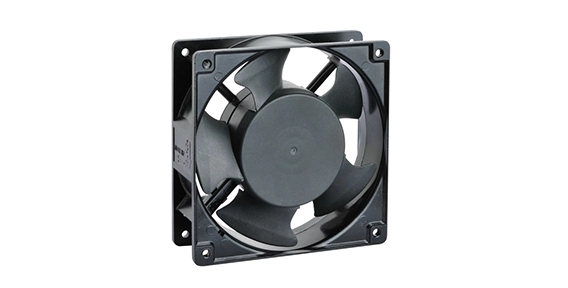Introduction: XieHengDa’s AC Axial Fan - A Game Changer in Cooling Systems
XieHengDa, a renowned name in the HVAC industry, has been instrumental in introducing innovative solutions that redefine efficiency and performance. One such revolutionary product is the AC Axial Fan, which has emerged as a game-changer in cooling systems. This article delves into the reasons behind this fan’s transformative impact on the industry.
The Mechanics of Innovation: Understanding the AC Axial Fan
To appreciate the game-changing nature of the AC Axial Fan, it’s essential to understand its mechanics. XieHengDa’s AC Axial Fans are designed to move air in a direction parallel to the shaft around which the blades rotate, providing efficient cooling in a compact design.
Efficiency Redefined: The Role of AC Axial Fans in HVAC Systems
The AC Axial Fan’s design allows it to move large volumes of air efficiently, making it an integral component of HVAC systems. This section explores how these fans enhance the performance and efficiency of cooling systems, setting new industry standards.
The Green Cooling Solution: AC Axial Fans and Energy Conservation
XieHengDa’s AC Axial Fans are not just about performance; they also contribute significantly to energy conservation. By reducing energy consumption, these fans offer an eco-friendly solution to cooling needs, aligning with global sustainability goals.
Safety and Performance: Ensuring Safe Operation of AC Axial Fans
Safety is a paramount concern when dealing with HVAC components. XieHengDa’s AC Axial Fans are designed with safety features that ensure their safe operation, contributing to their status as a game-changer in the industry.
Maintenance for Longevity: Keeping AC Axial Fans at Peak Performance
Regular maintenance is crucial to ensure the longevity and optimal performance of AC Axial Fans. This section provides a comprehensive guide on maintaining these fans, ensuring they continue to deliver superior cooling and energy efficiency.
Real-World Impact: Case Studies of AC Axial Fans in Action
To provide a practical perspective, this section presents case studies of real-world applications of XieHengDa’s AC Axial Fans. These case studies highlight the transformative impact of these fans on cooling systems, reinforcing their game-changing status.
The Future of Cooling: AC Axial Fans and Emerging Trends
As the HVAC industry evolves, AC Axial Fans are poised to play a significant role in shaping future trends. This section explores the potential of these fans in the context of emerging technologies and market demands, highlighting their continued relevance in the industry.

 EN
EN  +
+
 +
+
 +
+



